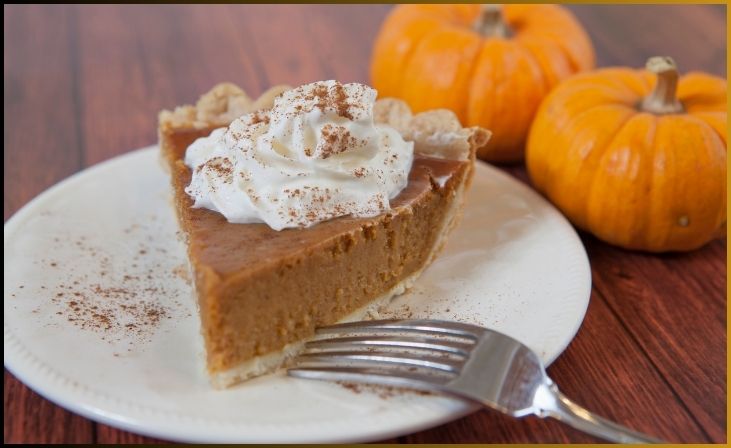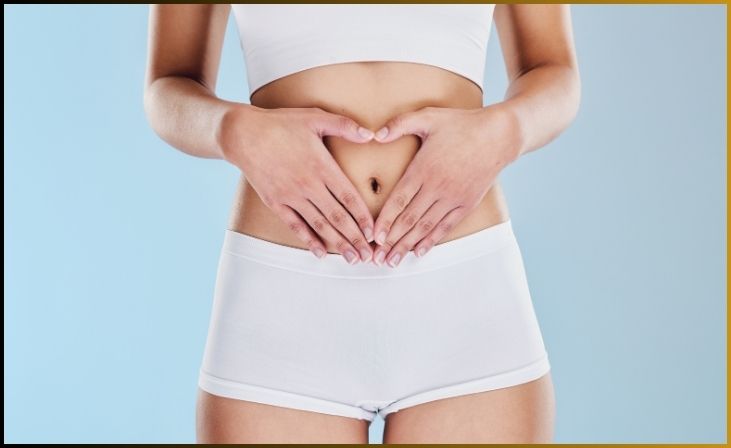As autumn paints the world in warm hues, embrace the spirit of the season with a culinary masterpiece that combines tradition with innovation – the Lacto-Fermented Pumpkin Pie. This blog post invites you into the heart of fall’s flavors, where the classic comfort of pumpkin pie meets the health-conscious magic of lacto-fermentation.
We embark on a journey to reimagine this beloved dessert, infusing it with probiotics to create a gut-friendly treat that not only satisfies the autumn sweet tooth but also nurtures your well-being.
Join us as we delve into the step-by-step process, explore the benefits of lacto-fermentation, and savor the symphony of flavors in each slice of this Lacto-Fermented Pumpkin Pie. Get ready to elevate your fall dessert game with a recipe that marries delicious tradition with the goodness of fermentation.
Table of Contents
ToggleThe Magic of Lacto-Fermentation
Lacto-fermentation, an age-old preservation technique, not only imparts depth of flavor but also introduces beneficial bacteria to enhance the nutritional profile of foods. In the case of our beloved pumpkin pie, this process adds a probiotic twist, transforming a classic dessert into a health-conscious delight.
Also Read- Fermented Lemons and Mint Recipe
Ingredients:
For the Pumpkin Filling:
- 2 cups of fresh pumpkin puree
- 3/4 cup brown sugar
- 1 teaspoon ground cinnamon
- 1/2 teaspoon ground ginger
- 1/4 teaspoon ground nutmeg
- 1/4 teaspoon ground cloves
- A pinch of salt
- 3 large eggs
- 1 cup evaporated milk
For the Pie Crust:
- 1 1/4 cups all-purpose flour
- 1/2 cup unsalted butter, chilled and cubed
- 1/4 cup granulated sugar
- A pinch of salt
- 3 tablespoons ice water
For the Fermentation:
- 1/4 cup whey (strained from yogurt)
- 1 tablespoon sea salt
Step-by-Step Recipe:
1. Prepare the Pumpkin Puree:
- Roast or steam fresh pumpkin until tender, then puree until smooth.
2. Create the Pie Crust:
- In a food processor, pulse flour, sugar, and salt.
- Add chilled butter and pulse until the mixture resembles coarse crumbs.
- Gradually add ice water, pulsing until the dough comes together.
- Form a disc, wrap in plastic, and refrigerate for at least 1 hour.
- Roll out the dough and line a pie dish.
3. Prep the Fermentation:
- Mix pumpkin puree, brown sugar, cinnamon, ginger, nutmeg, cloves, and a pinch of salt in a bowl.
- In a separate bowl, combine whey and sea salt.
- Add the whey mixture to the pumpkin filling, stirring well.
4. Assemble the Pie:
- Beat eggs and add them to the pumpkin mixture.
- Gradually add evaporated milk, stirring until smooth.
- Pour the mixture into the prepared pie crust.
5. Fermentation:
- Cover the pie with plastic wrap and let it ferment at room temperature for 6-12 hours.
- Once fermented, preheat the oven to 425°F (220°C).
6. Bake the Pie:
Don't just scroll, subscribe!
BuzzTrail's unique web-stories are the cure for boredom you've been waiting for.
- Bake the pie for 15 minutes at 425°F (220°C), then reduce the temperature to 350°F (175°C) and bake for an additional 40-45 minutes or until the center is set.
- Allow the pie to cool before slicing.
The Health Benefits of Lacto-Fermented Pumpkin Pie
Probiotic Boost

A Probiotic Boost refers to the intentional incorporation of probiotics, live beneficial bacteria, into one’s diet to promote a healthy gut microbiome. These microorganisms play a crucial role in supporting digestion, nutrient absorption, and overall immune function. Foods or supplements rich in probiotics, such as yogurt, kefir, or fermented vegetables, contribute to the balance of gut bacteria.
This microbial balance is linked to numerous health benefits, including improved digestive health, enhanced immunity, and potential alleviation of digestive issues. Embracing a diet with a probiotic boost is not only a flavorful journey into fermented foods but also a proactive approach to nurturing the symbiotic relationship between the body and its resident beneficial bacteria.
Improved Nutrient Absorption
Improved Nutrient Absorption refers to the enhanced assimilation of essential nutrients by the body, facilitated by various factors that optimize the digestive process. One key contributor to improved nutrient absorption is a healthy gut microbiome, where beneficial bacteria aid in breaking down complex compounds and promoting the bioavailability of nutrients. Factors such as proper digestion, absorption in the small intestine, and the presence of necessary enzymes contribute to this process.
A balanced and diverse diet, along with practices like fermentation, which introduces probiotics, can positively impact nutrient absorption. This heightened efficiency in nutrient uptake ensures that the body receives the maximum benefit from the vitamins, minerals, and other essential elements present in the foods we consume, promoting overall health and well-being.
Digestive Health

Digestive Health refers to the optimal functioning and well-being of the digestive system, encompassing various organs such as the stomach, small and large intestines, liver, and pancreas. A healthy digestive system efficiently processes food, breaking it down into nutrients that the body can absorb and utilize. Key indicators of digestive health include regular bowel movements, absence of discomfort or bloating, and the efficient absorption of nutrients.
Factors such as a balanced diet, proper hydration, regular exercise, and a diverse gut microbiome, rich in beneficial bacteria, contribute to maintaining digestive health. Proactive measures, like consuming fiber-rich foods and fermented items containing probiotics, support the digestive process and can alleviate issues such as indigestion or constipation, fostering overall well-being.
Enhanced Flavor Complexity
Enhanced Flavor Complexity refers to the heightened richness and depth of taste in a dish, achieved through the intricate interplay of various flavor components. This culinary concept involves incorporating diverse and complementary flavor profiles that go beyond basic tastes, such as sweet, salty, sour, and bitter. Elements like umami, the savory taste, and the addition of herbs, spices, or fermentation contribute to a more nuanced and layered sensory experience.
By combining different textures, aromas, and tastes, enhanced flavor complexity elevates a dish from simple to sophisticated, tantalizing the palate and creating a more memorable and enjoyable eating experience. Whether achieved through culinary techniques or the inclusion of diverse ingredients, enhanced flavor complexity adds a delightful dimension to the world of gastronomy.
For More- Delicious Lacto-Fermented Pumpkin Recipe
Serving Suggestions
- Whipped Probiotic Cream:
- Top your lacto-fermented pumpkin pie with a dollop of whipped cream made from probiotic-rich yogurt for an extra gut-friendly touch.
- Fall Spice Garnish:
- Sprinkle a pinch of cinnamon or nutmeg over each slice for a festive and aromatic addition.
- Pairing with Fermented Beverages:
- Serve alongside fermented beverages like kefir or kombucha to create a complete probiotic-rich dessert experience.
Conclusion
In conclusion, the Lacto-Fermented Pumpkin Pie Recipe not only satisfies the seasonal craving for a classic fall dessert but also introduces a probiotic element that elevates its nutritional profile. As you indulge in each velvety bite, relish in the harmony of flavors enhanced by the magic of lacto-fermentation. This recipe is a testament to the notion that health-conscious choices need not compromise on taste. So, as the leaves fall and temperatures drop, bring a slice of warmth and wellness to your table with a homemade Lacto-Fermented Pumpkin Pie – where tradition meets the art of fermentation.
FAQs
What is lacto-fermentation, and why use it in a pumpkin pie recipe?
What is lacto-fermentation, and why use it in a pumpkin pie recipe?
Lacto-fermentation is a preservation process that involves beneficial bacteria. Introducing it to a pumpkin pie recipe not only enhances flavor complexity but also brings probiotic benefits to support digestive health.
Can I use canned pumpkin puree for this recipe?
Can I use canned pumpkin puree for this recipe?
While fresh pumpkin puree is recommended for optimal flavor and texture, canned pumpkin puree can be used as a convenient alternative. Ensure it’s 100% pure pumpkin without added spices or sugars.
What role does whey play in the fermentation process?
What role does whey play in the fermentation process?
Whey, extracted from strained yogurt, is rich in lactic acid bacteria crucial for fermentation. It jumpstarts the process, introducing probiotics to the pumpkin filling.

